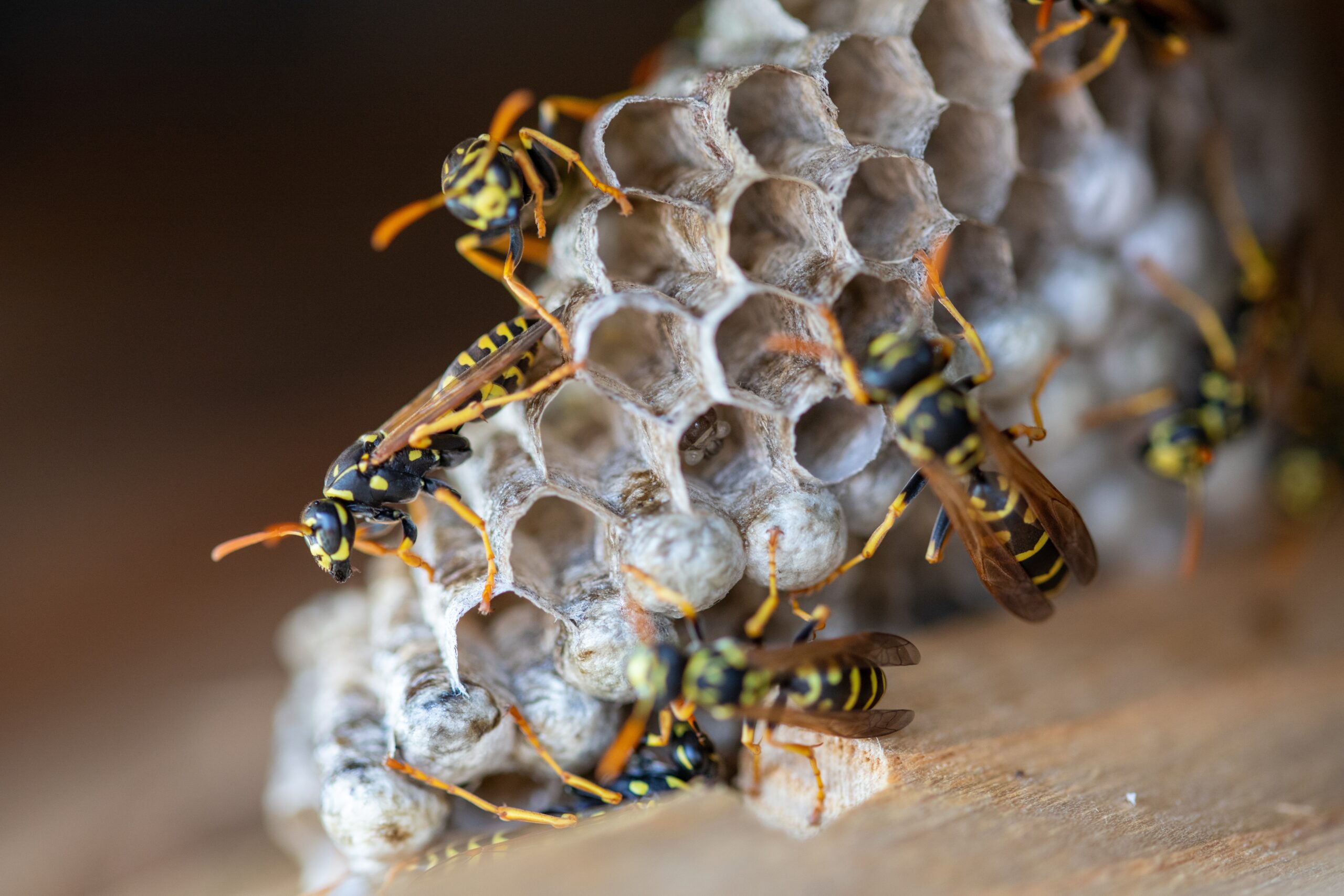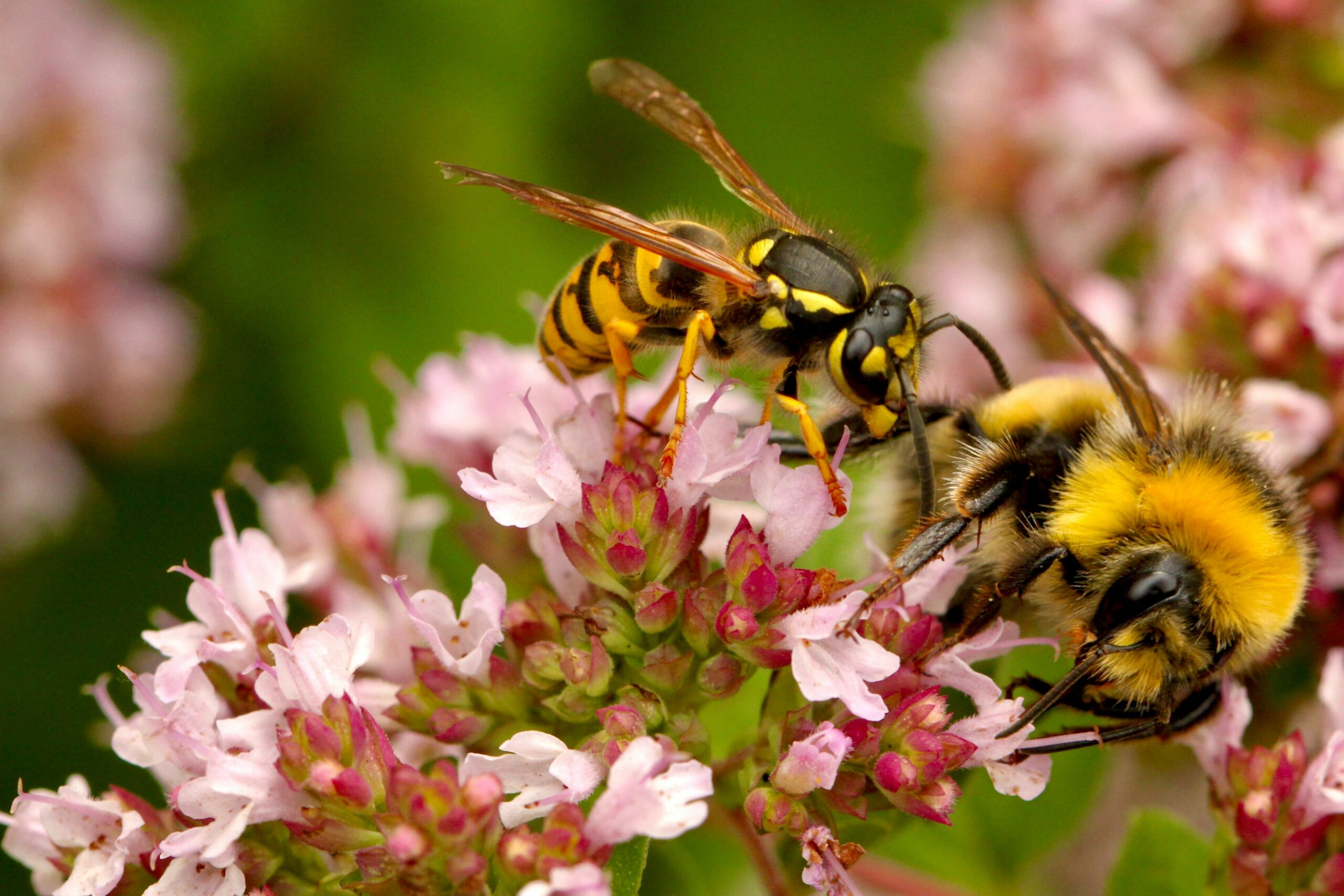PAPER WASPS
Your Wasp Problem, Gone For Good, Guaranteed.
Talk to an Expert
We’ll be in touch to personalize your pest protection plan:

DESCRIPTION:
___
Paper wasps are 3/4 to 1 inch long. They gather fibers from dead wood and plant stems, which they mix with saliva, and use to construct water-resistant nests made of gray or brown papery material.
BIOLOGY:
___
Adult female paper wasps that mate in the fall of the year are capable of over-wintering in the adult stage, in sheltered places such as culverts, standpipes, attics, barns, outhouses, wood piles, garages, or any other structure that affords protection from the harshest elements. All of these over-wintering females are potential new queens, for the nest and social colony. There are no sterile female workers in a paper wasp colony.

Habits:
___
They are social wasps. If you knock down the nest of the paper wasps they are more than likely to be rebuilt on the very same spot within a few days. Since they are social wasps, they feel an instinct to protect their nest. Because their nest is open it also may be available to predators, and one of the predators these wasps fear is ants. Ants would love to swarm over the nest and drag the big, juicy larvae out of their cells, to take back as food for their own larvae. Nests may house several hundred to several thousand individual cells, depending on the species. Typical nests around homes generally stay in the range of a couple of hundred or less. Paper wasps will over-winter and will reuse and add on to their nests in the following spring.
Only female wasps have a stinger, all of the members of the colony are females, and therefore all of them can sting. Males do not participate, but are created at some period of the colony life for mating only.
